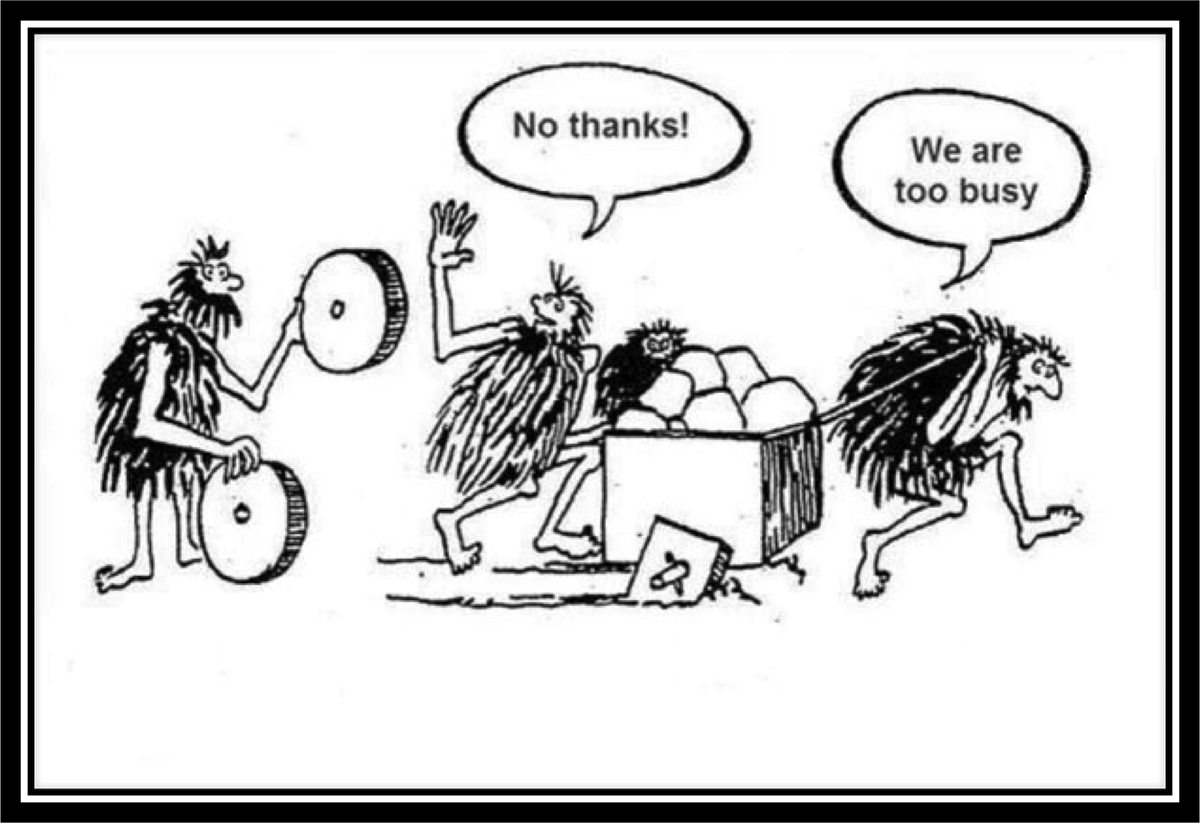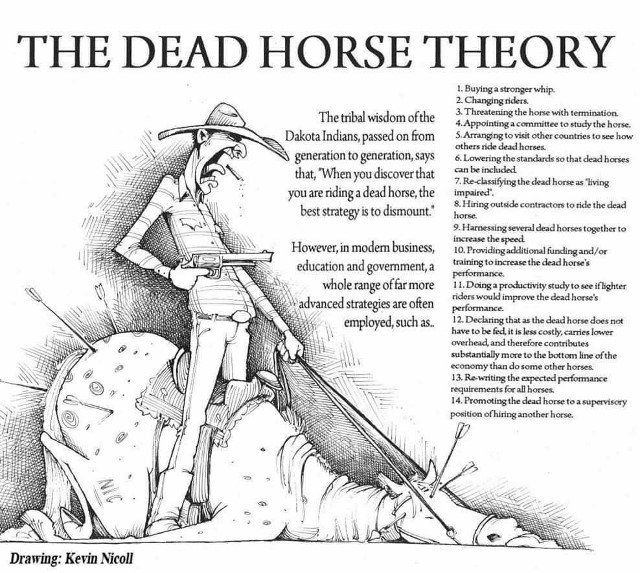What is EOS (the Entrepreneurial Operating System)?
Lloyd Wolf | Professional EOS Implementer®
An Introduction to EOS® (the Entrepreneurial Operating System®)
When I talk with entrepreneurs and business leaders and I tell them I am a Professional EOS Implementer® in Pittsburgh, it is not unusual for them to ask me "So Lloyd, what is EOS?"
Here is what I tell them:
- VISION – from the standpoint of first getting your leaders 100% on the same page with where your organization is going and how you plan to get there.
- TRACTION® – from the standpoint of helping your leaders to become more focused, disciplined and accountable, executing really well to achieve every part of your vision.
- HEALTHY – meaning helping your leaders to become a more healthy, functional, cohesive leadership team, because unfortunately, leaders sometimes don’t function well together as a team.
From there, as goes your leadership team, so will go the rest of the organization. Ultimately we get to a point where your entire organization is crystal clear on your vision, all much more disciplined and accountable, executing well, gaining consistent traction towards achieving your vision, and advancing together as a healthy, functional, cohesive group of people who actually enjoy spending time together.
As our conversation continues, I usually also add the following additional context:
EOS (the Entrepreneurial Operating System) is unique because it is easy to understand and use. EOS doesn’t treat symptoms – it helps you cure the “whole body” by strengthening the Six Key Components™ of your business
– Vision, People, Data, Issues, Process, and Traction. It works in any entrepreneurial company and across all business models because the system is founded on time-tested methods and principles, not business management theories or “flavor of the month” fads.
EOS is a complete system for business owners and leaders who want faster growth, healthier teams, and greater profits but recognize they don’t have all the answers. More than 10,000 growing businesses across the country and around the globe leverage EOS to align their leadership team, improve accountability, and simplify their operations.
I also often get asked "Lloyd, how did you first hear about EOS?" That story goes like this:
I first heard about EOS (the Entrepreneurial Operating System)
in 2015, when a trusted business friend gave me the book Traction: Get a Grip on Your Business by Gino Wickman. At the time, I was running my former IT consulting business Wolf Consulting LLC - which was (and still is) a leading provider of computer support and cloud services for small & mid-size businesses in Pittsburgh and Western Pennsylvania. My leadership team and I were excited by what we read, so we hired an EOS Implementer and we began our EOS journey. We successfully used the EOS concepts and tools for the last 3+ years I was running that business, and they still use EOS today.
I love what EOS did for my own business and the positive impact it had on me, my leadership team and the entire company. And I have a passion for helping business owners and leaders achieve their goals and get more of what they want from their business. So after retiring from Wolf Consulting, and finding I wasn't very good at the "retired" part of "semi-retired", I completed my training to become a Professional EOS Implementer®. In that role, I have the opportunity to work with businesses located in the Greater Pittsburgh Area and Western Pennsylvania – as a teacher, facilitator and coach – to help them implement EOS in their organizations.
Would you like to learn more about EOS?
Help First
is one of my Core Values. I’ll give you 90 minutes of my time to tell you more about EOS (the Entrepreneurial Operating System) and show you and your leadership team how to experience "Vision, Traction and Healthy" in your business. This 90 Minute Meeting provides a simple but informative explanation of EOS to help you learn more and decide whether it’s right for you. There’s no better way to tell if EOS is a fit for your business. It's not a sales pitch - it’s just the easiest way for you and your team to connect with me for a overview of the system, the tools and the process. There’s no charge for this meeting, and there is no expectation or obligation to ever work together, I promise. It’s simply meant to answer all your questions and help you and your leadership team decide if you'd like to transform your business with EOS, and if I am the right Professional EOS Implementer for you. Contact me
today for an initial discussion or to schedule your no-obligation 90 Minute Meeting.
Lloyd Wolf
is a Professional EOS Implementer®.
He works with business owners and senior leaders located in the Greater Pittsburgh Area and Western Pennsylvania – as a teacher, meeting facilitator and business coach – to help them implement EOS® (the Entrepreneurial Operating System®) in their organizations. Contact Lloyd
today for more information about how you can experience "Vision, Traction and Healthy" in your company using EOS.
Share This Blog
You might also like

I’m sure you’ve seen cartoons like this one. It does a great job of humorously exposing the universal problem many business owners and leaders find themselves in – feeling so overwhelmed with the daily/weekly/monthly challenges of running their business that they are blind and deaf to solutions that can eliminate (or at least significantly reduce) those challenges. I call this “but I’m too busy to solve my biggest problems”. Whether you are putting out fires with customers or clients, dealing with people issues, working on growth or profitability, juggling projects or simply going about your day-to-day job, do you feel like there never seems to be a good time to take on anything else? People often use “but I’m too busy” as an excuse not to have to deal with the real challenges or issues at hand. They often hide behind, buy into, and believe they are truly too busy. If you feel this way or have ever felt this way, that just makes you normal. Lots of business owners and leaders feel that way, or have felt that way at some point. I know there were times when I felt that way when I owned and was running my former IT business. Sometimes those daily/weekly/monthly challenges felt so overwhelming. But just look at the cartoon. Isn’t it painfully obvious the cavemen pulling and pushing the cart should take the time to get assistance from the caveman offering them wheels? I was blessed in 2015 when a trusted business friend handed me a copy of the book Traction: Get a Grip on Your Business by Gino Wickman and introduced me to EOS® (the Entrepreneurial Operating System®). Think of EOS as the round wheels in the cartoon. EOS is a complete and proven business system, with simple and practical tools, that align and synchronize all the pieces of a business. It creates a clear overall vision, provides real traction in achieving that vision, and leads to more control, better results, and healthy teams. EOS addresses business issues at their root – rather than spot treatments and rather than treating symptoms of issues. Think how much easier life would be for the cavemen moving their cart if they had the benefit of round wheels! For me and my leadership team, yes implementing EOS was work and required our time. But it ultimately SAVED us time and made things better. What opportunities do you have to make things better for you and your business – but you’ve said you’re too busy? Are you really going to have more time next month? Next Quarter? Next year? Or will you still be just as busy if you don't make a fundamental change? I encourage you to pause, take a step back, look around, and see what opportunities are right in front of you that could make things better. Are you feeling too busy with your business? Are you frustrated with the status quo and wish there was a better way? I am blessed to be able to help business owners and leaders implement a set of wheels that have successfully helped thousands of others run better businesses and live better lives. If you’re open to learning more, reach out to me – if you’re not too busy 😊.

I was recently talking with one of the leaders of an organization I met last summer. He shared with me that he and some other members of the management team felt an important change needed to be made, but the top leader of the organization wasn’t ready to make the necessary change. This is certainly not an unusual situation. There is a tendency in all organizations, and even in our personal life, to resist change. That’s true even when we realize that what we’re doing is no longer as effective as it once was, or is completely ineffective and fails to provide any value. That discussion with the business leader reminded me of “The Dead Horse Theory” my friend and mentor shared with me a little over a year ago. It goes something like this: The tribal wisdom of the Dakota Indians — passed on from generation to generation — says that when you discover that you are riding a dead horse, the best strategy is to dismount. Just get off. Sounds pretty simple, but it doesn’t take very long looking around and talking with people to realize that it is far from simple. Change is always hard, and just because everyone knows it needs to happen doesn’t mean it will. The reality is that today’s organizations (businesses, non-profits, churches, educational institutions) and even us as individual people, have found a whole range of creative and far more advanced strategies to use when dealing with a dead horse, such as: Buying a stronger whip. Changing riders. Threatening the horse with termination. Appointing a committee to study the horse. Proclaiming, “This is the way we’ve always ridden this horse.” Arranging to visit other countries to see how others ride dead horses. Declaring, “God told us to ride this horse.” Develop a training session to improve our riding ability. Reminding ourselves that other organizations ride this same kind of horse. Determining that riders who don’t stay on dead horses are lazy, lack drive, and have no ambition – then replacing them. Lowering the standards so that dead horses can be included. Reclassifying the dead horse as “living-impaired.” Hiring an outside consultant to advise on how to better ride the horse. Harnessing several dead horses together to increase the speed. Confessing boldy, “This horse is not dead, but alive!” Providing additional funding and/or training to increase the dead horse’s performance. Riding the dead horse “outside the box.” Get the horse a new or refreshed website. Killing all the other horses so the dead one doesn’t stand out. Taking a positive outlook – pronouncing that the dead horse doesn’t have to be fed, it is less costly, carries lower overhead, and therefore contributes substantially more to the bottom line of the organization’s budget than do some other horses. Rewriting the expected performance requirements for all horses. Promoting the dead horse to a supervisory position of hiring another horse. Name the dead horse, “paradigm shift” and keep riding it. Riding the dead horse “smarter, not harder.” Remembering all the good times you had while riding that horse. We all have some dead horses we are riding. We need to first admit the horse is dead. We often live in denial. You can try to beat it, you can flog it, this will not change the fact – the horse is dead. So what dead horses (i.e. structure, people, processes, policies, products, services, customers) are you clinging on to in your organization? One of the things I love about working with my clients to implement the EOS® (the Entrepreneurial Operating System®) in their organizations is the help it brings to avoiding riding a dead horse. The EOS Toolbox™, the Meeting Pulse™ (annual, quarterly, weekly) and meeting agendas, and the open and honest dialog between the leadership team members allows them to have those difficult, but very necessary, conversations – rooted in trust and HEALTHY conflict, without the fear of grudges, politics or guilt. The simple and practical tools used by companies running on EOS allows the team to know when they’ve got a wrong person in the organization, when someone is sitting in the wrong seat, when something in the organization is off-track and needs to be put back on-track, and when its time to make a change – simply put, when they need to dismount a dead horse. If something is off-track in your organization and it feels like you’re “riding a dead horse”, ask me how implementing EOS can help you make the change(s) needed to solve the issue, as well as give you the tools to make changes that will be needed in the future as your organization grows.


